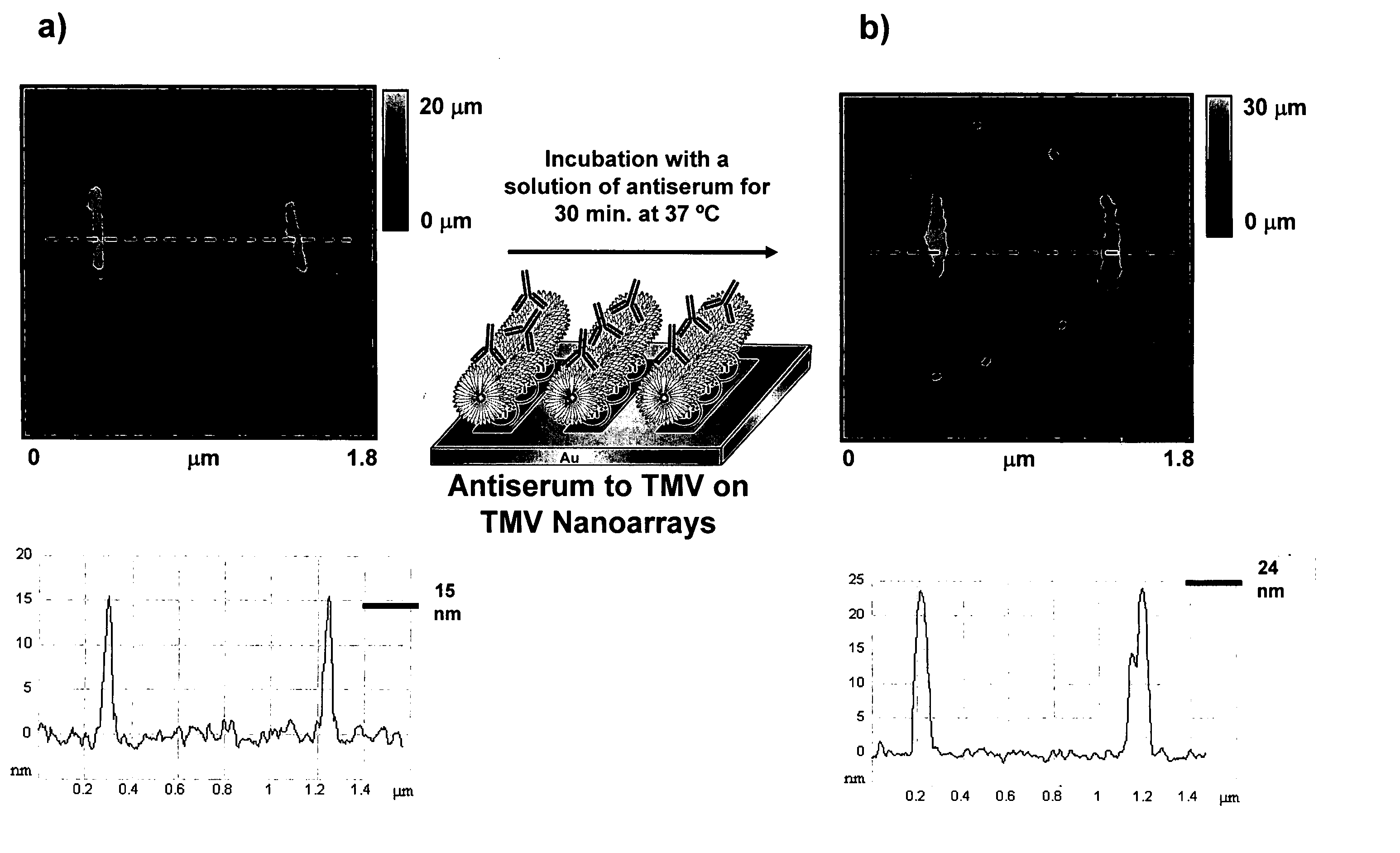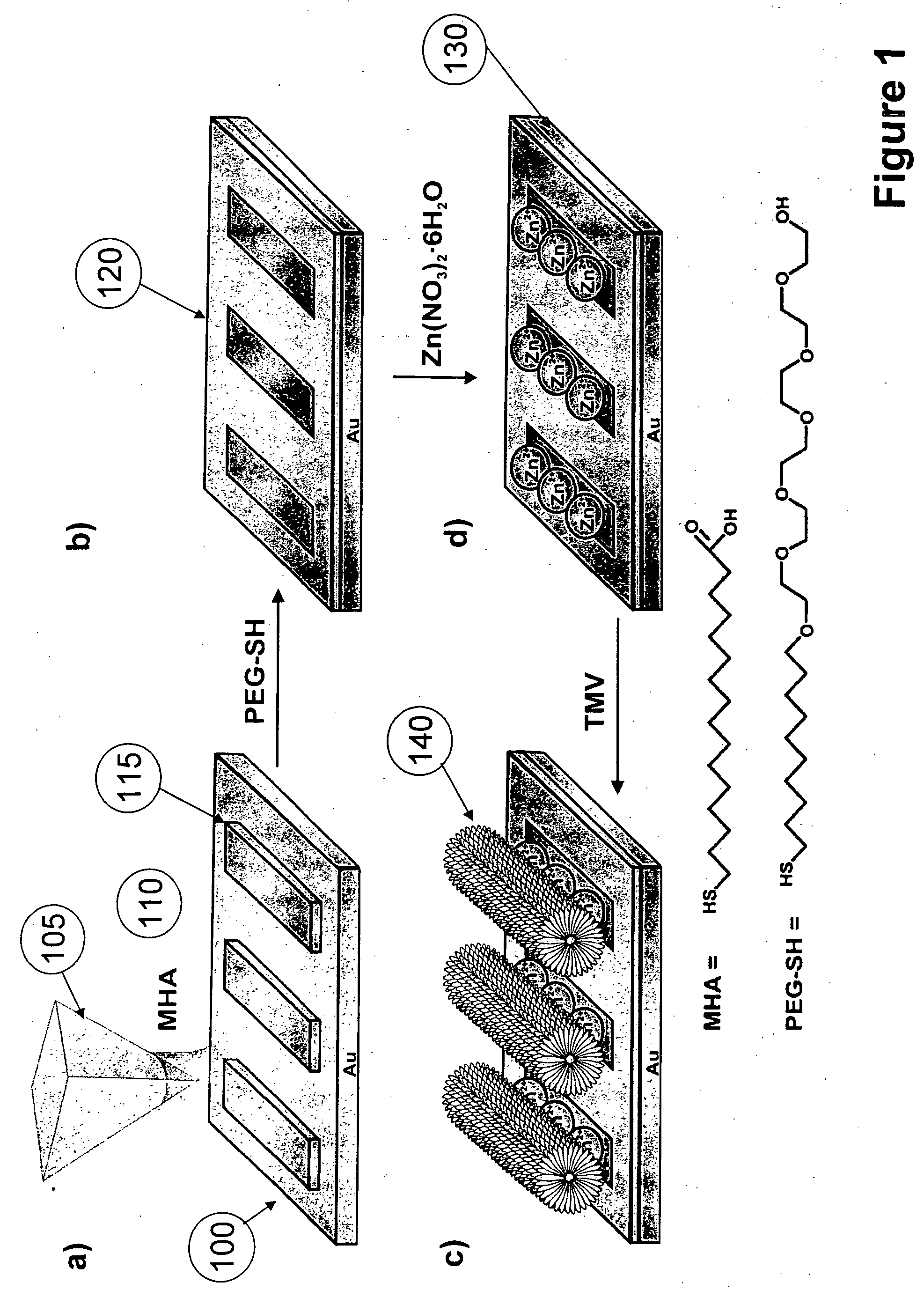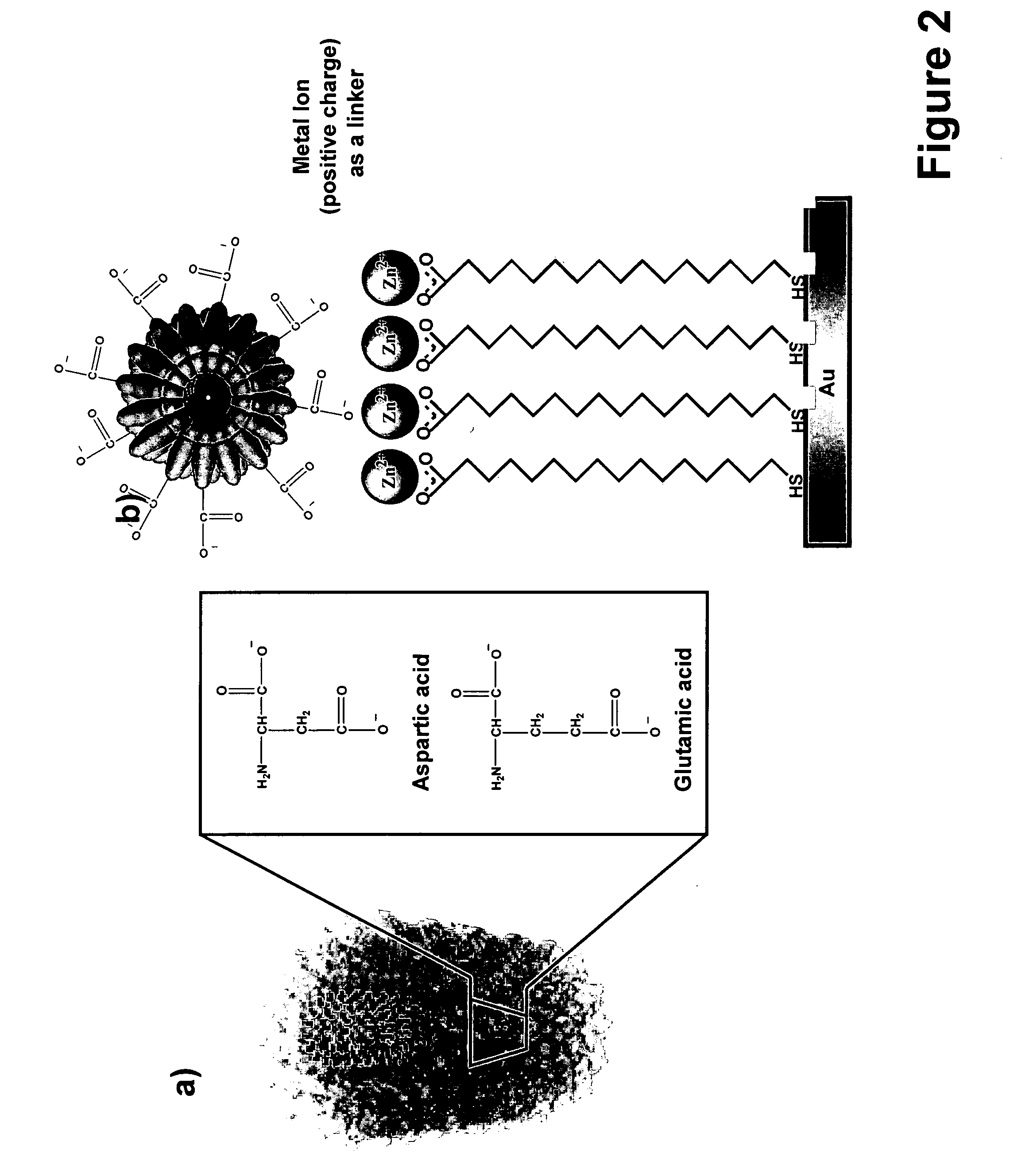Nanoarrays of single virus particles, methods and instrumentation for the fabrication and use thereof
a technology of single virus particles and nano-arrays, which is applied in the field of nano-arrays of single virus particles, methods and instruments for the fabrication and use thereof, can solve the problems of limited practical resolution of current microarray technologies, such as spotting with pin arrays, inkjet printing or methods derived from photolithography, and the density of fabricated arrays, and the number of distinct deposited biological entities, etc., to achieve the effect of reducing the number of biological entities
- Summary
- Abstract
- Description
- Claims
- Application Information
AI Technical Summary
Benefits of technology
Problems solved by technology
Method used
Image
Examples
working examples
[0085] Non-limiting working examples are provided.
working example
Site-Isolated TMV Arrays:
[0086] In this example, virus particles were site-isolated, positioned and oriented on Zn2+-MHA nanotemplates generated by dip pen nanolithography. Viral immobilization was characterized using antibody-virus recognition as well as infrared spectroscopy.
[0087] The approach used in this working example relied on the ability of metal ions (Zn2+) to bridge a surface patterned with features made of 16-mercaptohexadecanoic acid (MHA) and the TMV with its carboxylate-rich surface.
[0088] Tobacco Mosaic Virus (TMV) was chosen because of its anisotropic tubular structure (about 300 nm long, 18 nm diameter), size, stability, and well-characterized carboxylate-rich surface.[10] It serves as an excellent demonstrative system to evaluate how one can use DPN to control the positioning and orientation of nanoscale virus particles within an extended array.
[0089] Virus nanoarrays were fabricated by initially generating chemical templates of MHA on a gold thin film using D...
PUM
| Property | Measurement | Unit |
|---|---|---|
| surface area | aaaaa | aaaaa |
| surface area | aaaaa | aaaaa |
| surface area | aaaaa | aaaaa |
Abstract
Description
Claims
Application Information
 Login to View More
Login to View More - R&D
- Intellectual Property
- Life Sciences
- Materials
- Tech Scout
- Unparalleled Data Quality
- Higher Quality Content
- 60% Fewer Hallucinations
Browse by: Latest US Patents, China's latest patents, Technical Efficacy Thesaurus, Application Domain, Technology Topic, Popular Technical Reports.
© 2025 PatSnap. All rights reserved.Legal|Privacy policy|Modern Slavery Act Transparency Statement|Sitemap|About US| Contact US: help@patsnap.com



